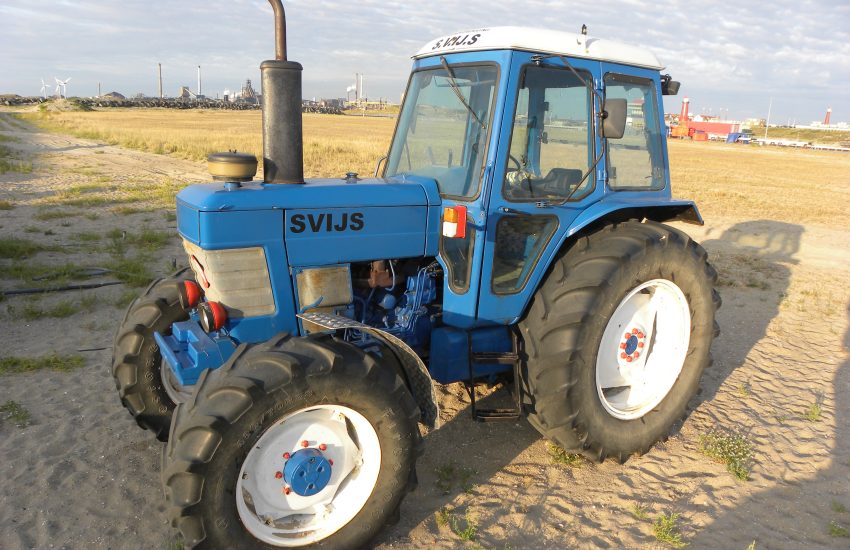Most Common Problems John Deere 5203 & Their Solutions
John Deere 5203 is a 5003 Series utility tractor. It comes a 2.9L 3-cylinder diesel. It’s one of the India-made models, and it’s sufficiently big for bush hogging. It includes quick-acting JD hydraulics, easy-to-turn power steering, and excellent brakes.
However, we see some common problems with the John Deere 5203. These are starting issues, relay wiring problems, rock shaft & draft control problems, 3-point hydraulic problems, fuel system issues etc.
In this article, I will discuss all of these issues in details. You will also find the solution to these issues. So read on till the end!
Problems and Solutions at a Glance:
| Problems with John Deere 5203 | Solutions |
| Starting Issues | Troubleshoot sensors, replace the wires. |
| Rock Shaft & Draft Control Problems | Stepwise troubleshooting. |
| Fuel System Issues | Stepwise troubleshooting. |
3 Most Common Problems with John Deere 5203 and Their Possible Solutions:
Many users have reported the following John Deere 5203 problems. I have included a section discussing how to solve each of them below.
1. Starting Issues
This is a mysterious problem which even JD fails to solve. You may notice that suddenly there is no firing of the engine. The engine cranks hard, but nothing happens.
You can ohm the fuses, check the oil and coolant level, safety switches etc. But you may still have no solution.
The Fix:
When you have finished doing all the troubleshooting, disconnect the cold start advanced sensor. Crank it. If the engine doesn’t fire up, bleed the injector fuel lines.
When you crank it with the bleeders out on the pump, your pump is okay if the fuel streams out. However, your injection pump may need to be removed and rebuilt if it has become clogged.
The problem can also be due to the start relay wires. The red wires’ insulation leads to the starter relay under the steering wheel melts. This happens often on these tractors.
In this case, you need to replace the wires. First, however, you will need a wire diagram to determine which wire goes where.
2. Rock Shaft, Draft Control
The rock shaft and draft control are part of the hydraulic system. As a result, it can be problematic sometimes. For example, it can be unable to fully lift an item with the rock shaft lever if the draft control lever is down (off position).
Without the draft control, the lift arms will not rise to their maximum height. The draft control lever must also be retracted to its highest setting. A couple more inches and then the hitch may be fully raised.
The Fix:
You can attempt the following to make sure that the rockshaft draft mechanism allows for the right level of implement control:
Remove the right-side fender first. Then fully advance the outside control lever. Verify that the rockshaft centerlink is not under any load.
Once the rockshaft arms start to raise, slowly move the inner lever backward. Check the location of the inner pivot plate’s back edge at this time. It ought to be parallel to the flat surface of the friction plate’s back.
There is no need for adjustment if the surfaces of the lever and plate line up as depicted. Continue with the procedure if an adjustment is required. Unfasten the rod end lock nut on the draft-sensing rod.
If the lift arms move before the plates line up, shorten the rod by ratcheting the flats on it. Lengthen the rod if the lift arms move after the plates are aligned. Repeat the process until the correction is precise. Ensure that lock nut is securely tightened.
The lowest two mounting holes are often used by implements with Category I mast heights of 457 mm (18 in.). The upper two mounting holes are often used by implements with Category II mast heights of 610 mm (24 in.).
3. Fuel System Issues
The fuel system fails to operate properly. Often you would find water in the fuel system. Then white smoke starts to come out from the exhaust.
When the tractor is idling, you may find yourself having a throttle issue. The ride may be bumpy. The truck may feel like it has no power.
Often you may not find any water in the fuel system. But the underpower issues and bumpy rides may persist.
The Fix:
Clean and reinstall the injector pump after removing it. Remove the tank and clean it. Clean the fuel system and replace the fuel filter.
Avoid using ether since it could harm the engine. Fill the tank with new fuel, change the fuel filter and fill it with fuel before installing it. Pull the pressure line from the tank where it attaches to the fuel filter, and check that fuel is coming out.
Since there is no fuel pump, the line will be filled by gravity. The tank must be full to flush the line. Additionally, this will clear the fuel line of any faulty fuel.
As directed in the instruction manual, bleed the tractor. Try opening the throttle halfway. You will need to bleed it at the injectors if it still won’t start. If you still have a no start problem after bleeding, I’ll advise trying to tow start it.
It’s difficult to prime and bleed the 5000 series tractors. The lift pump used by the majority of them, inside the injection pump, struggles badly to draw enough vacuum to prime properly.
The fuel is typically pumped through the filter after installing a fuel priming light in front of it. To let any air escape from the pump, you should unscrew a little plug on the side.
Continue priming the bulb after it has started to help remove any air. On these machines, only the plug on the side of the pump needs to be cracked, not the injection lines.
What Majority of the Users Feel about John Deere 5203?
A JD 5203 with a loader can be quite powerful for its size! If you aren’t careful, it can still get you into problems even with fluid in the back and a large counterweight.
With a turbocharged engine, the tractor can be a little noisy. It can get louder than a MF50. However, it has excellent power steering and a tight turn radius. This makes it simple to attach the 3 pt hitch to an implement because it almost pivots about the rear tire contact patch.
It also has excellent visibility, save for the rear fender corner, where a clamshell would not obstruct the view.
The 2.9L engine is the main prize of purchasing one of these tractors. They work great and I have seen them utilized with military generators in difficult locations.
The 5203 was notorious for it’s bad fuel economy. However, it has improved now. Although, while cutting hay, the mount for the PTO may snap off.
The JD 5203 work okay and essentially lie between the 5300 or 5320 with fewer features. No power reverser, just a shuttle shift transmission.
Other than that, it is generally dependable unless an operator develops a passion for gear grinding.
Frequently Asked Questions
Which tractor compares to the JD 5203 best as of 2022?
Mahindra 575 and MF 410.
How to fix JD 5203 low compression issue?
Fuel pump control rod misalignment prevents a full fuel feed so the control rods need to be adjusted.
What loader can cause starter problems for JD 5203?
A 512 loader.
What is the main cause of engine hard start on a JD 5203?
Clogged fuel filter.
Final Thoughts
From what I’ve found, it is better to purchase a Mahindra or any other tractor other than the John Deere 5203. Because it has its fair share of notorious failures. So my recommendation will be against the John Deere 5203.
Related Posts:


